Note: Dates shift with time zones and lunar calculations. We recommend October 10, per Indian panchang timings, but check local apps like Drik Panchang for your exact moonrise.
A Festival Written in the Sky
Some festivals live on calendars; Karva Chauth lives in the sky. Each October, across India and in communities around the world, the day begins before dawn and stretches into the night, kept alive by devotion and measured only by the rising of the moon. It is one of the most demanding fasts, no food, no water, no exceptions. Yet its meaning is larger than abstinence. Karva Chauth is about patience, care, and the reminder that human life is still threaded through cosmic rhythms. Even if you’ve never fasted, the image is universal: families waiting for the moon, sieves raised, eyes lifted upward.
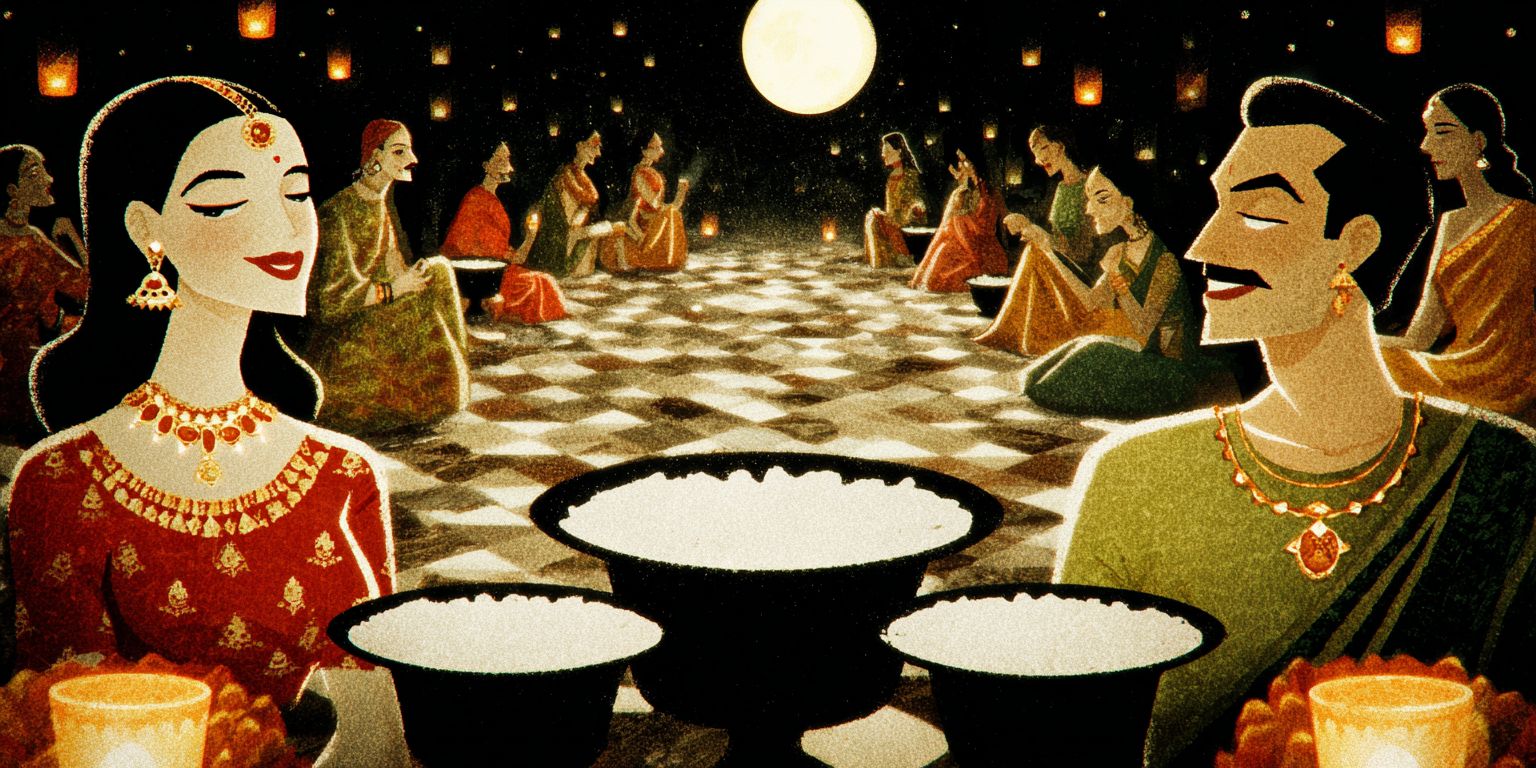
Ancient Threads: From Harvest to Story
In Sanskrit, it’s Karaka Chaturthi, a vow on the fourth waning moon of Kartik for strength and longevity. But its soul lives in stories passed down like heirlooms, tales of love, devotion, and unshakable bonds.
Veeravati’s Trial: A princess fainted from her first nirjala fast. Her brothers faked the moonrise with a lamp, and she broke her fast too soon. Tragedy struck, her husband died. Guided by the Goddess, she kept the vow faithfully for a year, and her devotion restored him.
Draupadi’s Vigil: In exile, anxious for Arjuna’s return from the Himalayas, Draupadi turned to Krishna. He asked her to keep the fast. Her prayer carried Arjuna back, safe and armed.
Karva’s Courage: When a crocodile dragged her husband under, Karva bound it with a thread and confronted Yama himself. Her faith forced the god of death to relent, sparing her husband and giving the festival its name.
Savitri’s Defiance: Married to a man fated to die, Savitri shadowed Yama, outwitted him, and fasted until he returned her husband’s soul. Her story remains the festival’s anthem of courage against fate.
But long before these stories, Karva Chauth had agricultural roots. In rural communities, women exchanged clay pots, or karvas, filled with grains, bangles, and sweets during the harvest season. These exchanges fostered solidarity among women, symbolizing fertility, prosperity, and mutual support in villages where the success of the wheat crop (sown in October) meant survival for the year ahead.
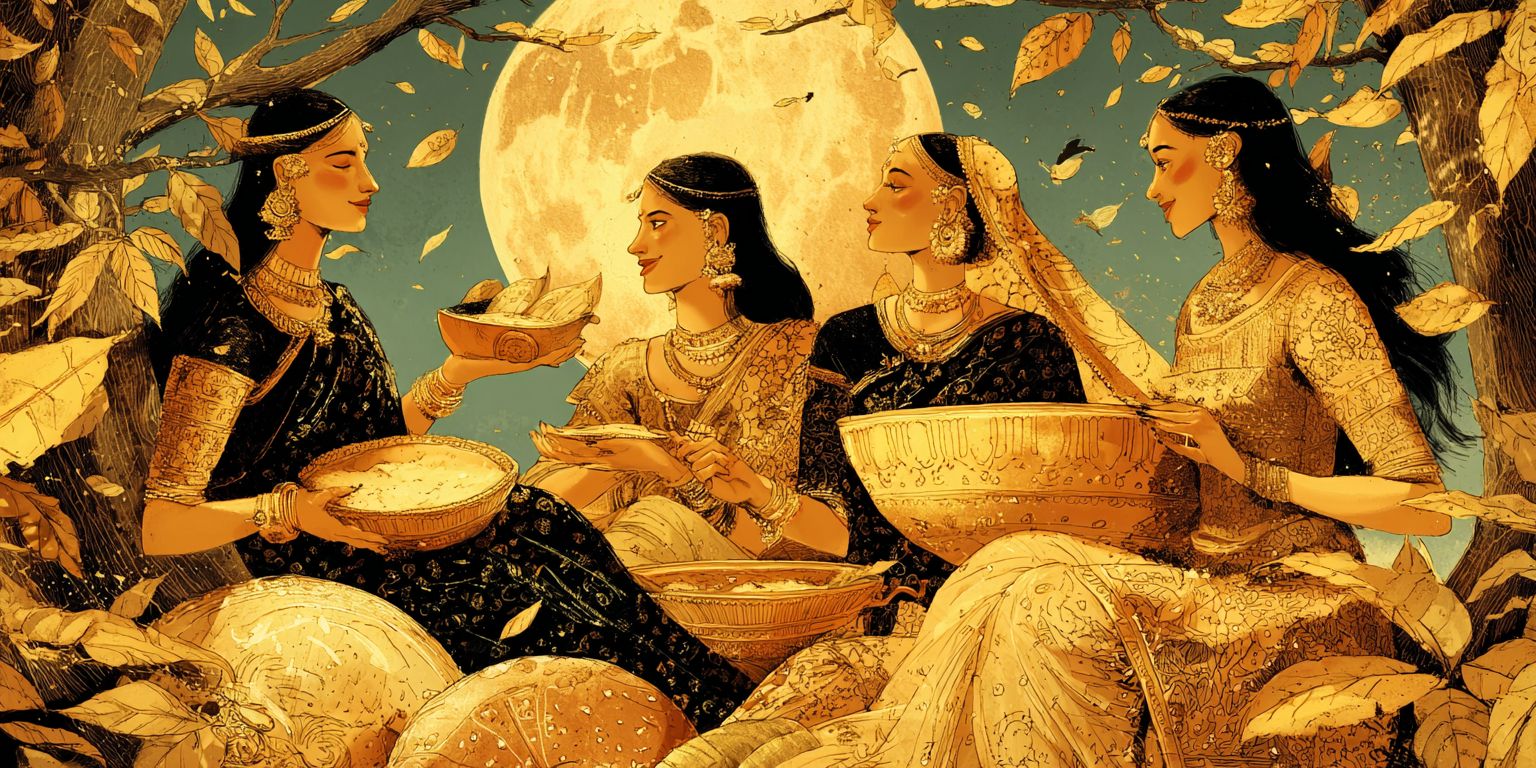
📌 Did you know? The name “Karva Chauth” literally encodes both the vessel (karva, an earthen pot) and the lunar date (chauth, the fourth day).
The Fast, the Body, the Mind
Karva Chauth’s fast is nirjala upavāsa, without water, without food. The Sanskrit upavāsa means not just “fasting,” but “staying close to the sacred.” Hunger and thirst become cues for prayer and clarity.
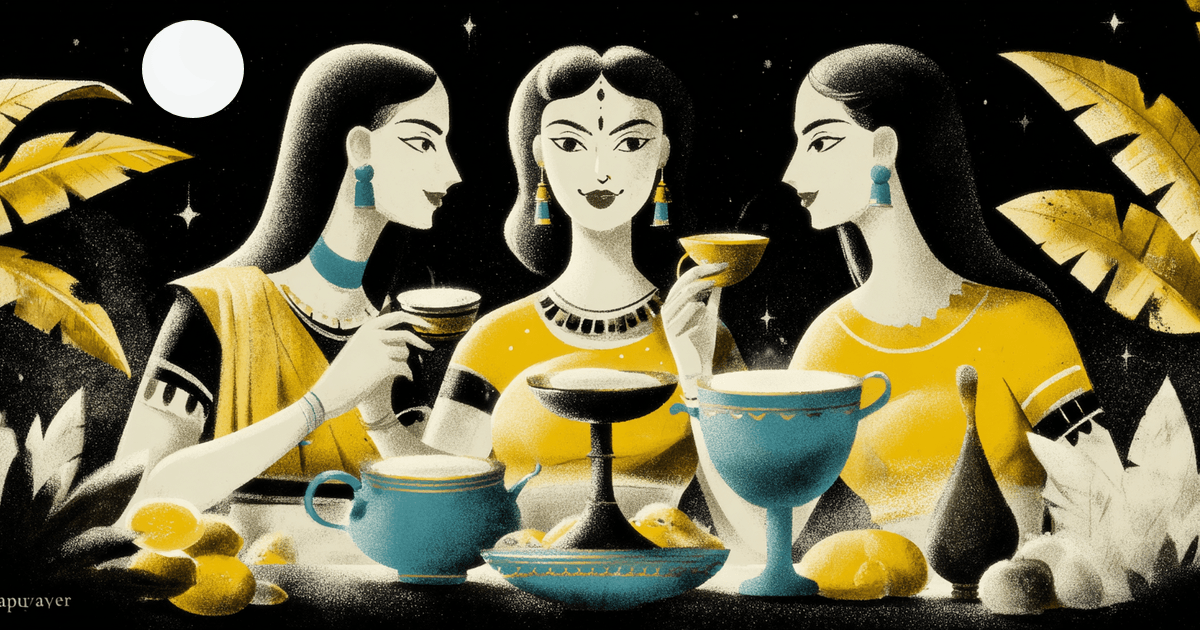
Modern science unexpectedly echoes these insights:
Autophagy: Fasting activates the body’s cell-recycling system, repairing damage.
Brain health: Studies link fasting to increased BDNF, a protein that protects and strengthens neurons.
Metabolism: Intermittent fasting improves insulin sensitivity and reduces inflammation.
Focus: Many report sharpened attention and calm during fasts, what tradition calls tapasya, discipline for clarity.
Fun fact: Research on circadian and lunar rhythms suggests that aligning fasting with natural cycles, like the moon, may help synchronize human hormones with the environment, enhancing overall well-being.
Moonrise: The Sieve and the Sky
The fast ends not with a clock, but with sight. When the moon rises, it is viewed through a sieve (chalni). First the moon, then one’s partner, framed in softened light. Water is offered upward, acknowledging the moon as cosmic witness, before the fast ends with a sip of water or a morsel of food shared by a partner.
The sieve itself is symbolic - blessings filtered, light refined. The act transforms abstinence into nourishment, waiting into devotion, and the sky into part of family life.
| New York | 8:30 PM |
| Chicago | 8:21 PM |
| Dallas | 9:33 PM |
| Los Angeles | 8:58 PM |
| San Francisco Bay Area | 9:02 PM |
Karva Chauth in America
In the U.S., the festival has found new forms. Rooftops in Queens, backyards in Fremont, driveways in Edison, balconies in Houston, these become the modern terraces of moon-watching.
Sargi might come from a grocery run at Patel Brothers or Costco rather than a mother-in-law’s kitchen.
Communities organize group fasts or temple events, blending ritual with social gathering.
Video calls connect relatives across time zones, with families “sharing” the same moonrise virtually.
Instagram and TikTok carry sieve pictures and moon captures, making the ritual visible to those outside the tradition.
What looks different in setting remains the same in essence; devotion, patience, and connection carried into new geographies.
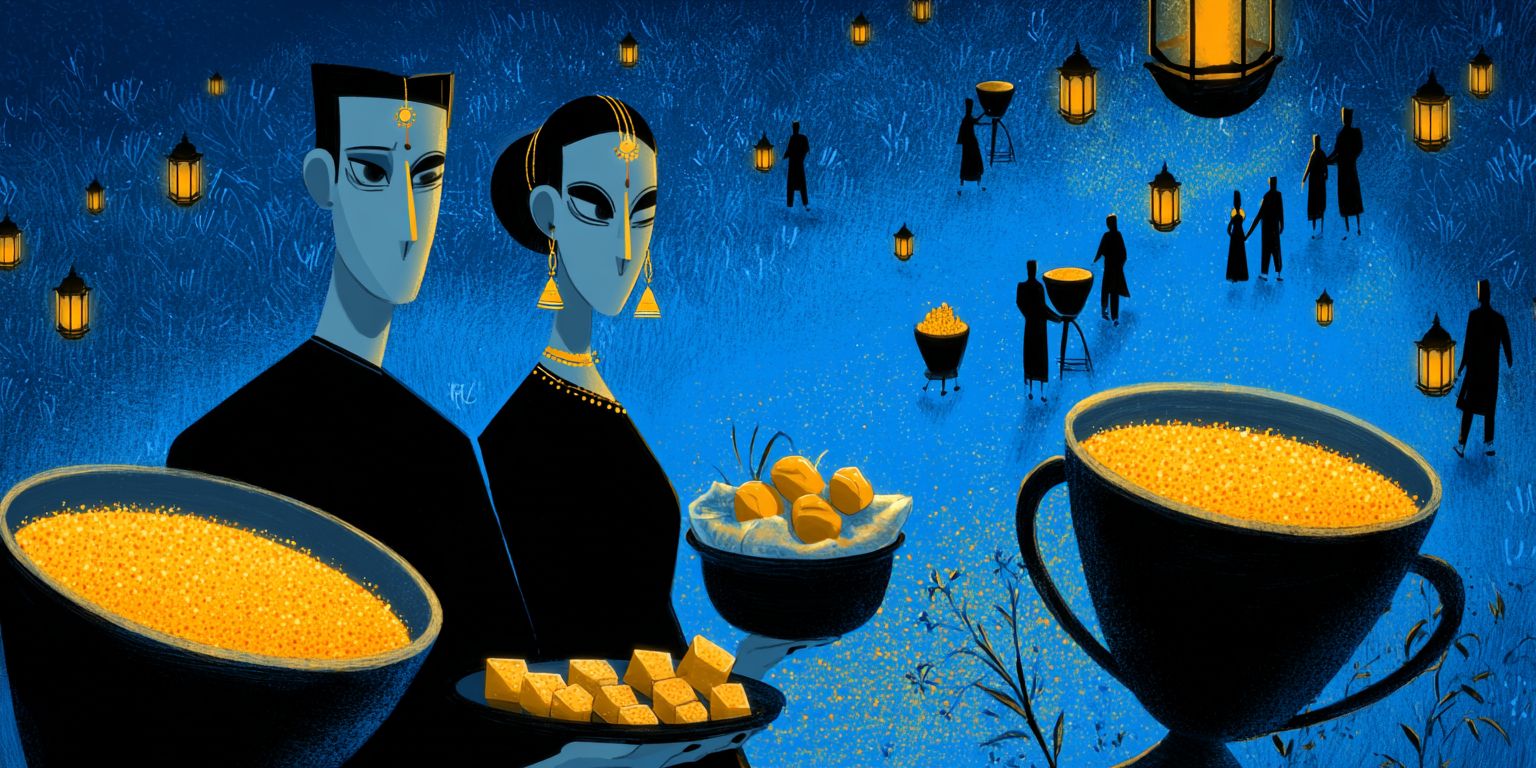
📌 Fun fact: The October full moon is known as the Hunter’s Moon in the U.S., marking abundance and seasonal transition, the same seasonal threshold Karva Chauth was tied to in India.
Lessons for All of Us
For those who keep the fast, Karva Chauth is a ritual of devotion. For those new to it, it offers insights that travel beyond tradition:
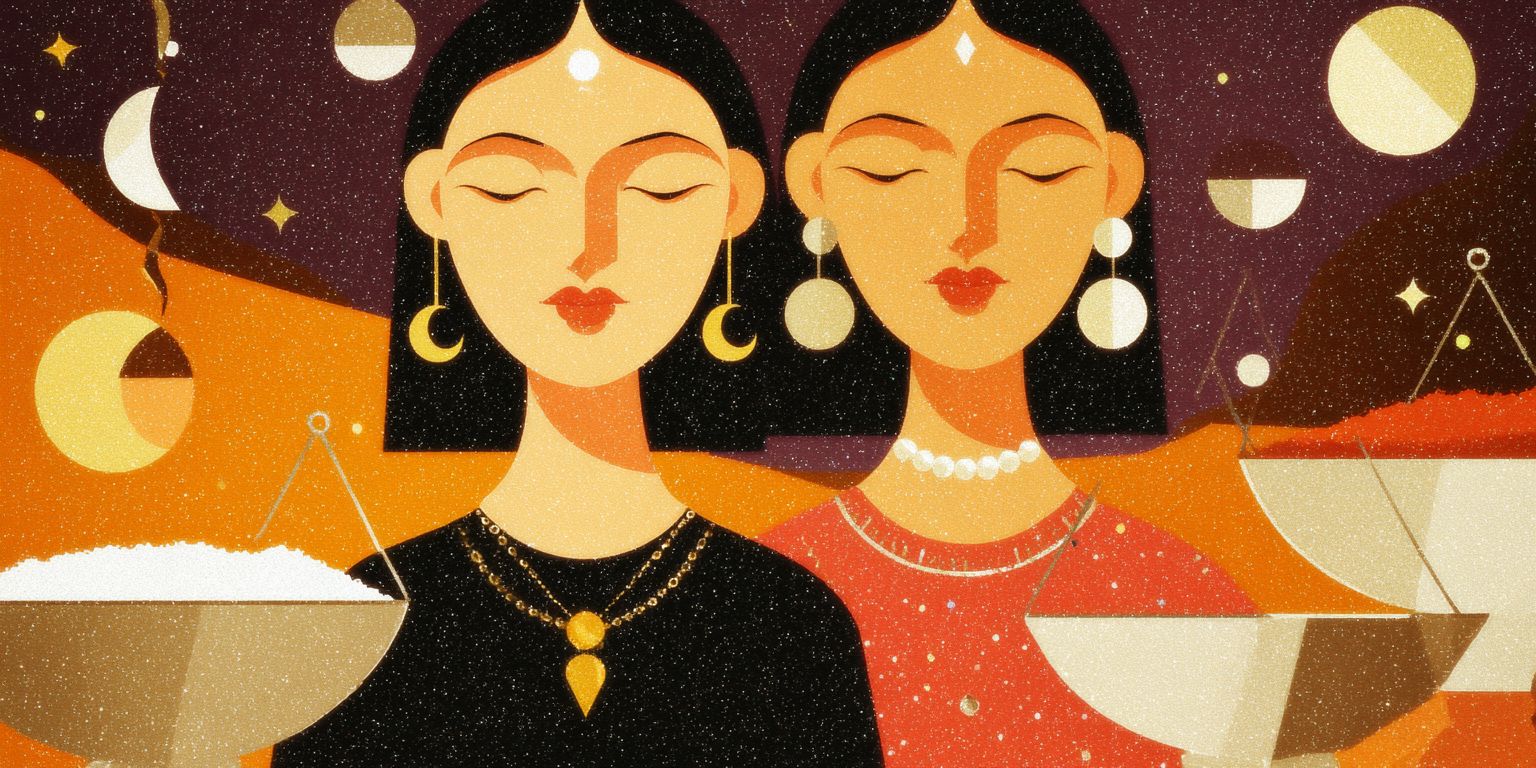
Patience matters. Waiting for the moon is a reminder that not everything bends to our schedules.
Discipline can be love. Fasting here is less deprivation than intention, love expressed through effort.
Cycles guide us. Even in modern life, lunar and seasonal rhythms still shape our bodies and minds.
On October 10, whether you are fasting, cooking for someone who is, or simply stepping outside to notice the moonrise in your city, Karva Chauth is a chance to pause and remember that meaning often arrives in small, timeless gestures.
✨ The Weekly Chai takeaway: Karva Chauth is not just a ritual, it is a reminder that even in our busiest, most modern lives, devotion, patience, and the moon can still guide the rhythm of a day.
